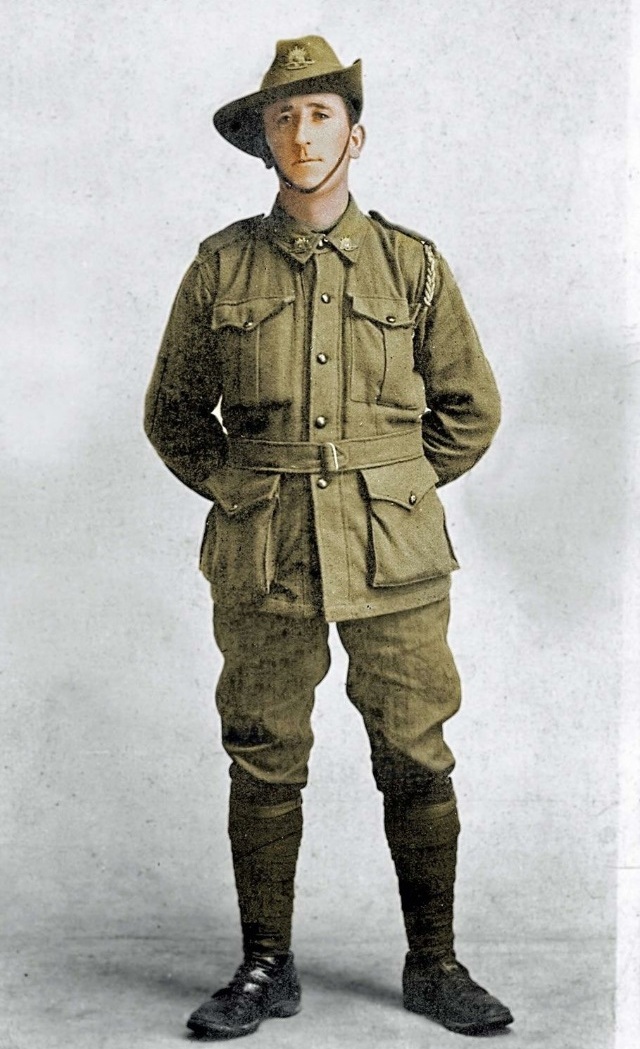Pte
Thomas Sayle Corlett
Information about birth
|
Year of birth: 1890 |
|
Place of birth: Ballaugh, Isle of Man, Isle of Man |
General information
|
Profession: Farmer |
Army information
|
Country: Australia |
|
Force: Australian Imperial Force |
|
Rank: Private |
|
Service number: 1110 |
|
Enlistment date: 03/02/1916 |
|
Enlistment place: Perth, Western Australia, Australia |
|
Units: — Australian Pioneers, 3rd Bn. (Last known unit) |
Information about death
|
Date of death: 19/10/1917 |
|
Place of death: Zonnebeke, Belgium |
|
Cause of death: Killed in action (K.I.A.) |
|
Age: 27 |
Cemetery
|
White House Cemetery Plot: III Row: L Grave: 12 |
Distinctions and medals 2
|
British War Medal Medal |
|
Victory Medal Medal |
Points of interest 3
| #1 | Place of birth | ||
| #2 | Enlistment place | ||
| #3 | Place of death (approximate) |
My story
Private Thomas Sayle Corlett enlisted for the Australian Imperial Expeditionary Forces on the 2nd of February 1916. He was assigned to the Australian Pioneers, probably because he only had three toes on his left foot. He consequently served in D Company of the 3rd Battalion Australian Pioneers, part of the Divisional Troops of the 3rd Australian Division. Private Thomas Sayle Corlett embarked for the front on the 6th of June 1916.
The 3rd Battalion Australian Pioneers participated in the Third Battle of Passchendaele. It’s main tasks during the October 1917 were to work on construction and maintenance of Mule tracks, for the supply of ammunition, food and supplies to the frontline. They also constructed and maintained artillery roads, to move the guns forward and laid duckboard tracks, which led the men through the boggy terrain to the frontline.
At 4 a.m. in the night of the 18th and 19th of August 1917 three officers and 51 other ranks of the 3rd Australian Pioneers left their billets, to work on the Mule track, running from Zonnebeke Station to Seine. Artillery Roads were also repaired. Particular attention was paid to drainage of the roads. Shell holes were filled up or were bridged and tracks were levelled ready for duckboards. The 3rd Australian Division was relieved on the 20th of October 1917, and the men of the 3rd Australian Pioneer Battalion left the Ypres area on the next day.
The 3rd Battalion Australian Pioneers suffered a total of fifteen casualties between the 18th and 20th of October 1917. Three men were killed and twelve men were wounded. Private Thomas Sayle Corlett was one of the men who were killed, while working on the Mule- and Duck tracks or the Artillery roads round Zonnebeke. He probably fell victim to German shell fire, while he was South of Potsdam and the Ypres-Roulers Railway. He was buried close to where he fell next to a track, leading to Zonnebeke, near an old German pill-box. He was later reburied at White House, St. Jean-les-Ypres Cemetery.
The 3rd Battalion Australian Pioneers participated in the Third Battle of Passchendaele. It’s main tasks during the October 1917 were to work on construction and maintenance of Mule tracks, for the supply of ammunition, food and supplies to the frontline. They also constructed and maintained artillery roads, to move the guns forward and laid duckboard tracks, which led the men through the boggy terrain to the frontline.
At 4 a.m. in the night of the 18th and 19th of August 1917 three officers and 51 other ranks of the 3rd Australian Pioneers left their billets, to work on the Mule track, running from Zonnebeke Station to Seine. Artillery Roads were also repaired. Particular attention was paid to drainage of the roads. Shell holes were filled up or were bridged and tracks were levelled ready for duckboards. The 3rd Australian Division was relieved on the 20th of October 1917, and the men of the 3rd Australian Pioneer Battalion left the Ypres area on the next day.
The 3rd Battalion Australian Pioneers suffered a total of fifteen casualties between the 18th and 20th of October 1917. Three men were killed and twelve men were wounded. Private Thomas Sayle Corlett was one of the men who were killed, while working on the Mule- and Duck tracks or the Artillery roads round Zonnebeke. He probably fell victim to German shell fire, while he was South of Potsdam and the Ypres-Roulers Railway. He was buried close to where he fell next to a track, leading to Zonnebeke, near an old German pill-box. He was later reburied at White House, St. Jean-les-Ypres Cemetery.
Sources 3
|
3rd Australian Pioneer Battalion, ((Australian War Memorial, Campbell (AWM), AWM4 14/15/12). https://www.awm.gov.au/collection/C1338583 Sources used |
|
Discovering Anzacs http://discoveringanzacs.naa.gov.au/ Sources used |
|
First Australian Imperial Force Personnel Dossiers, 1914-1920, (National Archives of Australia, Canberra (NAA), B2455, CORLETT T S). https://recordsearch.naa.gov.au/SearchNRetrieve/Interface/SearchScreens/NameSearch.aspx. Sources used |
More information 4
|
Commonwealth War Graves Commission Database https://www.cwgc.org/find-records/find-war-dead/casualty-details/454470 |
|
Namenlijst (In Flanders Fields Museum) https://namenlijst.org/publicsearch/#/person/_id=6ff288f8-c5b9-426b-8e50-ebe4a77d0e80 |
|
Lives of the First World War (Imperial War Museum) https://livesofthefirstworldwar.iwm.org.uk/lifestory/7398330 |
|
The AIF Project (UNSW Canberra) https://aif.adfa.edu.au/showPerson?pid=62934 |
